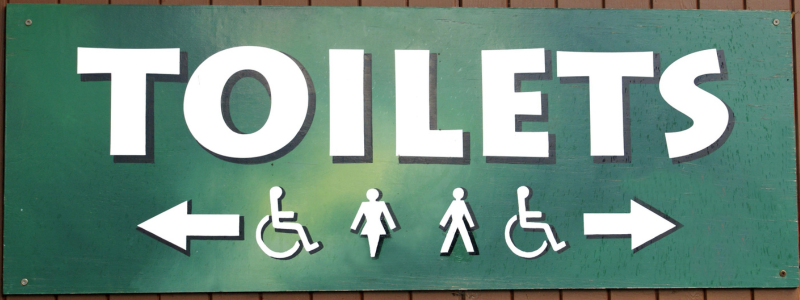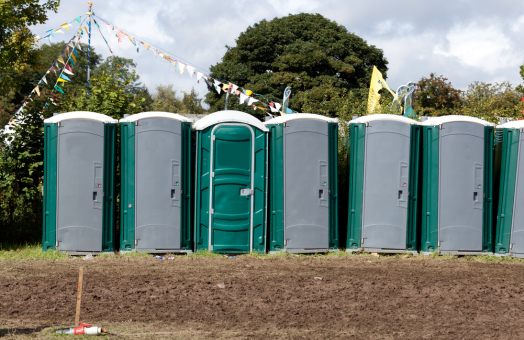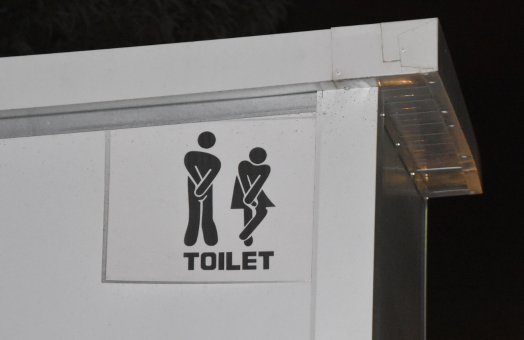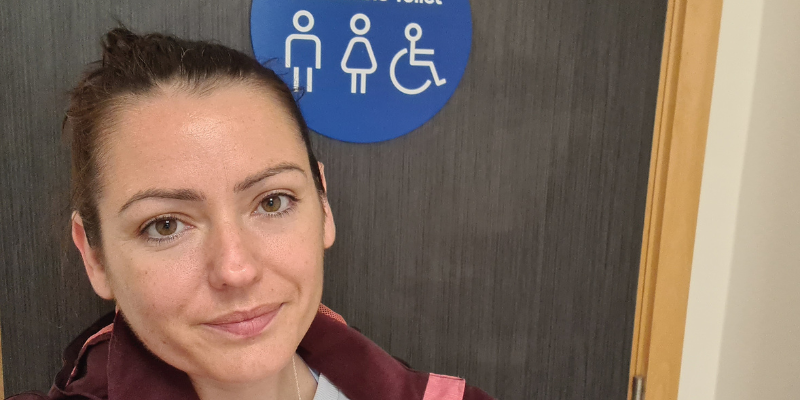
When you live with an invisible disability, or condition, device, or impairment, it can sometimes feel like the lack of understanding by other people is half the battle. A scenario where this can be problematic and sometimes discriminatory for many people with a stoma is when attempting to use accessible toilets.
Negative public toilet experiences
I expect most people can relate to having a bad experience with public toilets at one time or another. Add a chronic condition, and it gets substantially worse, and I don’t just mean the level of hygiene. I’ve received many accusing looks for using accessible toilets over the years, but no one has ever vocalised anything to me other than a tut once at a service station. Even when I didn’t have a stoma, I lived with Inflammatory Bowel Disease, a Jpouch, and Chronic Pouchitis. A Jpouch is a replacement rectum made from sections of small intestine, cut up and stitched or stapled back together and then connected to the anus.
I was at a festival last year and they weren’t very well equipped in the toilet department. There were constant queues, and it felt like as soon as I left the toilet, I was back in the queue again. It was a hot day, so hydration was a huge focus for me. I have bladder muscle dysfunction due to my previous surgeries, so not only was I continually needing to empty my bag, but my bladder too. There was one accessible toilet, and as the day went on, more and more people were starting to use it. The queue for that one was almost as long as the others. In that moment, I became the accuser – internally questioning how all of these people could have an invisible condition, disease, or impairment. Then I started hearing people say things like: well they’re clearly not disabled, so I’m joining this queue.”

I was really hot, bothered, and frustrated. I felt like crying because I realised that many people ahead of me in the queue likely had the same mind-set as the people I’d overheard. I heard the woman behind me telling someone she had an ostomy bag that was fit to burst and needed changing. I turned around and told her that I was in the same position.
When I finally got into the toilet, it was blocked, filled halfway up with toilet paper, and topped with a poop! I started panicking because I didn’t want to empty my bag onto it. Fortunately, I’m always prepared. I had to empty my ostomy bag into a dog poop bag I’d brought with me, and carefully clean up with tissues which went into the bag too. To my surprise, the lady in the queue behind me (who said she also had a stoma) was banging on the door throughout, telling me to hurry up. I found that quite unpalatable, considering she would have known what I was doing.
This experience has put me off going back to that particular festival until I know the toilet problem has been resolved! Maybe an accessible toilet that requires a RADAR key would be a good idea next time.
Once on a night out with friends, I had another very negative experience. I had my Jpouch at the time, and also pouchitis. I was experiencing extremely uncomfortable abdominal pain, and tenesmus (those pesky spasms in your rectum), so I had to go and sit on the toilet. It was a close call even getting to one in time. I sat there sweating, feeling nauseas with the pain, passing liquid from my Jpouch. I’d not been in there more than a minute, when a girl began banging on the toilet door and shouting. Her language was very colourful – unrepeatable here. I tried to ignore the shouting and banging. Then in the hope of tempering her aggression, I explained that I was having an issue and wasn’t ready to leave. When she continued screeching – so that everyone could hear, I lost my temper.

I flung open the door, dress still tucked up into my bra, scar covered abdomen on show, and whilst pointing to my scars I firmly told her, and the whole toilet queue that I had issues, ‘OKAY?’. The queue went silent, and the girl, speechless and seemingly unable to apologise, promptly left. Finally I could sit back down on the loo and be left in peace.
Ostomates share their negative experiences of accessible toilets
I often see posts from people in the IBD (Inflammatory Bowel Disease) and ostomy community who have faced similar situations. It’s an inescapable part of human nature – we make assumptions based on what we can see on the outside, without understanding each individual circumstance, along with the many reasons someone might need to use accessible facilities. I want to add a few of the stories that were shared with me. Thank you to those who contributed.
Dave was approached by a bouncer in a pub on a night out. The bouncer told Dave he had to leave because he was drunk and had clearly soiled himself. What had actually happened was that Dave’s ostomy bag had leaked and he’d not realised. After being escorted out, he explained what had happened, but despite an apology from the bouncer – it was too late and Dave just went home feeling embarrassed.
Jennifer told me the story of when she had to run across town to reach a toilet with two young children and her husband in toe. When she got there, an elderly lady was leaving the accessible toilet cubicle on a mobility scooter. The lady, on seeing where Jennifer was heading then blocked access to the toilet ramp with her scooter, and exclaiming, “it’s only for disabled people”. With no time to waste, Jennifer had to awkwardly climb around the scooter to reach the loo in time. Jennifer’s husband meanwhile gently explained the situation to the lady. Had he not been there, the lady might never have known what Jennifer was going through, perhaps leaving assuming that society truly was a disgrace.

Please remember, not all disabilities are visible
A few years ago, new signs started going up on accessible facilities all over the UK, showing a wheelchair user and person standing. I remember, as a member of the chronic illness community, people got excited about that. There was hope that we’d have to explain ourselves less. Sadly, so far, I have not seen any improvements on the way some people respond to me using accessible public toilets.
So to close, here is a plea from me, on behalf of those of us living with invisible chronic conditions:
Please – before you jump to a negative conclusion about a person attempting to use a public accessible toilet, stop yourself and think. Although you may be acting with a moral sense of duty – because that person looks able-bodied, please remember that they could be dealing with a chronic health condition that you cannot see.
And also please remember that accessible toilets are provided for a reason. If you don’t need to use them, then please don’t – think of people who might be in dire straits should they not be able to reach an accessible loo.
Do you have a story to share? Drop me and Fittleworth a tweet and tell us about it!
We hope you enjoyed this article from our guest blogger. They are expressing their views or knowledge on a topic because of their experience and background. Some of the opinions expressed may not reflect the views of Fittleworth or your NHS professional.
It goes without saying, but this is not clinical advice. Each person will have an individual set of medical factors to consider. So please do not to make significant changes to your diet, exercise or treatments before consulting with an NHS professional.
Sahara was admitted to hospital and diagnosed with Ulcerative Colitis at the age of 19, after just two weeks of being incredibly unwell. One week later, she had emergency surgery to remove her colon and rectum, and had her first ileostomy. A turbulent journey followed; a multitude of treatments, complications, seven surgeries, a failed J-Pouch, and three ileostomies later, she is living with a permanent stoma and is a pro-active IBD and ostomy advocate.

Sahara joined the online IBD and ostomy community in 2014, and it very quickly became apparent to her that whilst awareness is important, even more important than that is providing support to others as they navigate the stormy waters of life with IBD, or an ostomy.
She runs #IBDSuperHeroes fundraising and awareness campaign, and the Facebook support group. She is a blogger for InflammatortyBowelDisease.net and an IBD Patient Consultant for merakoi – bridging the gap between patients and healthcare. She gets involved with research whenever she can, and is a volunteer for Cure Crohn’s Colitis, where she donates her time and expertise in social media marketing and content creation.
